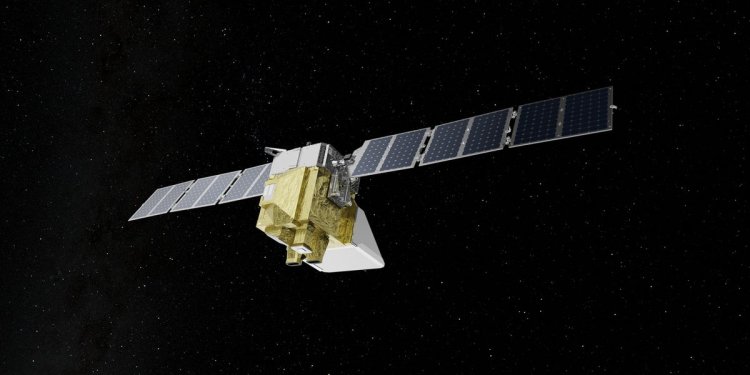SpaceX launched a satellite that Google will use to map methane leaks for all to see by the end of this year
SpaceX launched a new satellite that Google will use to map methane leaks for all to see

MethaneSAT / Environmental Defense Fund
- Monday, SpaceX launched a Falcon 9 rocket carrying the Environmental Defense Fund's MethaneSAT satellite.
- The satellite will track leaking methane, a potent greenhouse gas, from oil and gas companies.
- Google will use MethaneSAT data combined with AI to map methane leaks worldwide.
SpaceX successfully launched a game-changing satellite on Monday. Called MethaneSAT, the new satellite will track methane leaks from oil and gas companies worldwide.
Methane is a critical driver of climate change. When it comes to trapping heat inside Earth's atmosphere, methane is over 28 times more powerful than carbon dioxide.
Tracking methane leaks will help identify the most egregious emitters. BAE Systems
The Environmental Defense Fund developed MethaneSAT, and Google has partnered with the organization to create its first global methane map by the end of the year for all to see, ushering in a new era of climate accountability.
"After a flawless launch, MethaneSAT is heading toward space on a SpaceX Falcon 9 rocket," EDF reported on Monday. "The satellite is expected to be released from the rocket at 7:38 p.m. EST."
Monitoring methane
Methane is a powerful greenhouse gas linked to roughly a third of human-caused global warming. MethaneSAT / Environmental Defense Fund
The largest source of methane emissions is agriculture. But the energy sector is a close runner-up, accounting for 40% of human-driven methane emissions.
Monitoring this sector should be a priority, especially because cost-effective ways to reduce methane leaks already exist, according to the International Energy Agency.
A new age of accountability
Tracking methane leaks in real time was impossible, until now. MethaneSAT's launch marks the beginning of a new age of accountability for the energy sector.
It's just one of a new wave of satellites designed to zero in on methane gas sources around the world.
With the same AI technology it uses to identify trees, crosswalks, and intersections from satellite imagery, Google will map oil and gas infrastructure.
Then, the company will overlay MethaneSAT data onto the map to reveal where leaks are coming from. Google Earth Engine
MethaneSAT should help oil and gas companies meet goals to drastically reduce methane leaks by 2030, according to EDF.
At last year's UN climate summit, the world's leading oil and gas producers promised to nearly eliminate their methane emissions this decade.
"We have consistently seen the power of strong data to win robust regulatory safeguards and better operating practices in the industry," said Mark Brownstein, EDF senior vice president of Energy Transition, in an EDG press release. "Good science lays the groundwork for better decisions."
What's Your Reaction?




















